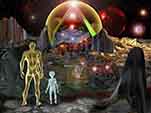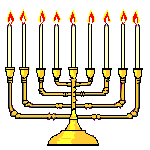we finish up Beaumont's work on 'Britain Key to World History.'I found it interesting,and his argument compelling,if it is as they tell us when it comes to Israel,the question that has to be asked is 'where are the artifacts from David,and Solomon???
...In the earlier years of King Hezekiah's reign efforts were made to strengthen the defences of Jerusalem, which had been left in a parlous condition by King Ahaz. The wall was built up to the height of the towers, another wall was added, the army was reconstituted and new arms were supplied in abundance. Consequently when Shalmaneser died, the tribute which the Judeans had been forced to pay to the Assyrians was not forthcoming, because they believed themselves sufficiently strong to ignore the demand.
Sennacherib, when his emissaries had been treated with derision, including among others Judah, eventually sent a large and powerful army against the recalcitrant city, an army composed of many nationalities, and laid long and close siege to it. Gradually as it tightened and the plight of the people became more precarious, with the fate of Samaria doubtless in their minds, fear became widespread. They had seen and heard Rabshakeh. They—or their rulers—recognised his desire was not tribute, for had they not stripped the Temple of all its treasures to provide it? No, the intent was to overthrow the kingdom of Judah.
"Jerusalem is ruined," cries Isaiah, "Judah is fallen!" A little later he pulls aside the veil yet further: "It is a day of trouble---and of perplexity by the Lord of Hosts in the valley of vision, breaking down the walls and crying (reverberating) to the mountains. And Elam bore the quiver with chariots and horsemen and Kir uncovered the shield . . thy choicest valleys shall be full of chariots and the horsemen shall set themselves in array at the gate . . . ye have seen also the breaches of the city that they are many."[66] "Let us eat and drink—for tomorrow we shall die."[67]
Such was the desperate situation, with, be it noted, Persian chariots and cavalry and infantrymen from Media before the walls and gates, where many breaches had already been effected. The triumphant Assyrian king, the Nabuchodonosor of the Book of Judith, had previously defeated the proud Arphaxad, King of Media (Kir), and the Persians (Elam), who were now swelling his armies, and Jerusalem was on the verge of collapse. Isaiah cited above is represented partly in the future tense, the usual ex post facto custom accorded to the prophets, although he mentions the breaches in the present tense, as having happened.
In addition the city was suffering from a grievous pestilence. As Jerusalem was thus tottering, the king himself was laid low and in extremis. At this crisis he was visited by Isaiah who said sternly, "Set thine house in order: for thou shalt die and not live." Hezekiah wept sore and prayed to the Lord, whereby the prophet relented, ordered his attendants to place a poultice of figs on the sore, and told the king that the Lord would deliver his city from the Assyrians, that he would be well enough to visit the Temple on the third day, and that he would reign for another fifteen years. Hezekiah evidently felt some doubt respecting this optimism, as was somewhat natural in the circumstances, and asked for some sign or proof. Thereupon Isaiah offered a remarkable sign or omen. In the garden of the royal palace stood the sundial of Ahaz, and the prophet said that the sun should be retarded by ten degrees backward: "so the sun returned ten degrees by which degrees it was gone down." In other words, that day was lengthened by ten hours.[68]
Whether the prophet offered such a test is of itself of no major importance to this investigation, or whether he actually forecast that Hezekiah would visit the Temple on the third day and reign another fifteen years. The crucial factor is that according to the account given, the retarding of the sun by ten hours beyond his wonted time indicated something phenomenal in the heavens, of which we must assume Isaiah was aware. It signified a total day of thirty-four hours. This recalls a sentence in the Book of Enoch (Ethiopian edition), which says, "In these days the sun shall rise in the evening and as a great chariot journey to the west, causing distress as it goes." The sun could not, of course, have performed so eccentric a course as to return by ten degrees on his track. On the other hand, a comet, approaching the earth very closely and throwing its light when the sun sank, could and would have shed its rays as Enoch says. Seneca, for instance, described the comet of 146 B.C. which appeared just after the death of Demetrius, King of Syria, as little inferior to the sun in size, a circle of red fire, and sparkling with a light so bright as to surmount the obscurity of the night. The comet that seemed to menace Jerusalem in A.D. 70, when Titus was besieging it, was called Xiphias, says Josephus, because its tail resembled the blade of a sword. Many records describe comets as like great suns, and it may be believed such was the case in the period of Hezekiah.
https://exploringrealhistory.blogspot.com/2020/07/part-6-of-6-britain-key-to-world.html






































